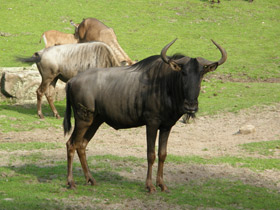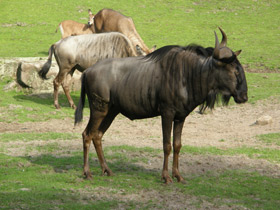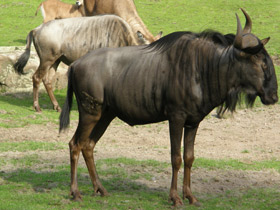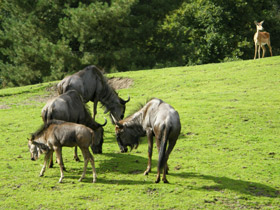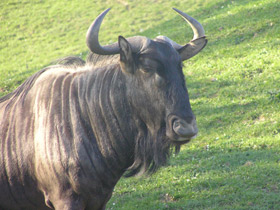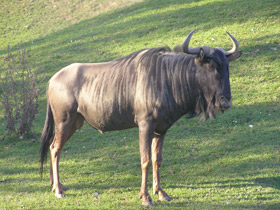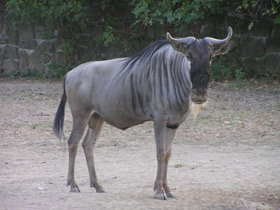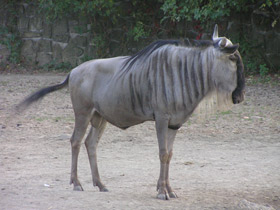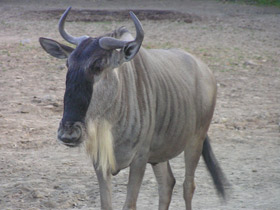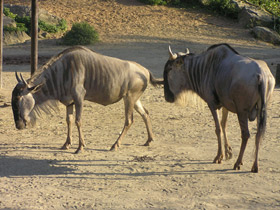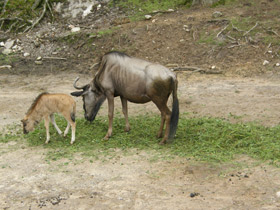The blue wildebeest, or gnu Connochaetes taurinus
The blue wildebeest, or gnu (Connochaetes taurinus) is one of few antelopes that are still widespread and numerous in Africa. Blue wildebeests occur both in the wild and in national park and wildlife reserves. For instance, over 300 thousand blue wildebeests live in the Serengeti-Masai Mara ecosystem, and about 14 thousand of these animals are found in Ngorongoro conservation area (250 km2). Dozens and even hundreds of blue wildebeests could be seen in unprotected territories along Nairobi-Namanga highway.
The blue wildebeest is a large animal standing 130 to 145 cm at the shoulders and weighing 250 to 270 kg. The base colour of its coat is bluish-grey, the forequarters bear vertical black stripes and the mane and tail are almost black. Blue wildebeests are common in eastern and southern Africa, from Kenya to eastern Namibia. Their northern range is bordered by Lake Victoria. Blue wildebeests prefer savannah open bushlands and short-grass plains that may be flat or slightly hilly, although they are not uncommon in scrublands and woodlands in dry areas. The wildebeest mainly feeds on the rapidly growing colonial grasses and two times a year many migratory herds of these animals travel long distances trying to find areas where recent rains stimulated growth of appropriate plants. Great migrations of blue wildebeests, with their herds extending over the horizon, are one of the most magnificent spectacles on Earth. In the regions where migrations are restricted by natural barriers, such as Ngorongoro Crater, wildebeests do not migrate but regularly move during the day from the slopes to the valleys with watering places. The animals spend long time near water, resting, rolling on their backs like horses, or playing. Like other Alcelaphinae, blue wildebeests are territorial animals, which trait is particularly pronounced in the area of Ngorongoro Crater, where some bulls hold permanent territories during weeks, months, and even years. Diameter of the home range is usually less than 100 to 200 meters. In other regions blue wildebeests are territorial only during the breeding season and home ranges exist for a short period. Gnu males do not mark all the boundaries of their territory but rather leave secretion of their preorbital glands on the grass in a few places; besides, each territory has its “toilet” serving the role of the main marking site. Males stand on their knees when fighting at the territory boundaries. The breeding season (“rut”) starts in rain season, in April, and lasts till June or July. Calves are born during February through March. The calves have evenly coloured brown coats that look completely different from that of adult animals. Young calves are able to follow their mothers in the first hours of their lives.

















